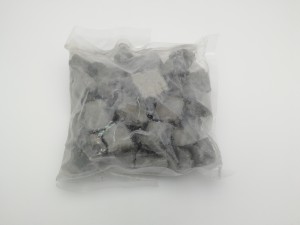Currently, rare earth elements are mainly used in two major areas: traditional and high-tech. In traditional applications, due to the high activity of rare earth metals, they can purify other metals and are widely used in the metallurgical industry. Adding rare earth oxides to smelting steel can remove impurities such as arsenic, antimony, bismuth, etc. High strength low alloy steel made from rare earth oxides can be used to manufacture automotive components, and can be pressed into steel plates and steel pipes, used for manufacturing oil and gas pipelines.
Rare earth elements have superior catalytic activity and are used as catalytic cracking agents for petroleum cracking in the petroleum industry to improve the yield of light oil. Rare earths are also used as catalytic purifiers for automotive exhaust, paint driers, plastic heat stabilizers, and in the manufacturing of chemical products such as synthetic rubber, artificial wool, and nylon. Utilizing the chemical activity and ionic coloring function of rare earth elements, they are used in the glass and ceramic industries for glass clarification, polishing, dyeing, decolorization, and ceramic pigments. For the first time in China, rare earths have been used in agriculture as trace elements in multiple compound fertilizers, promoting agricultural production. In traditional applications, cerium group rare earth elements are mostly utilized, accounting for about 90% of the total consumption of rare earth elements.
In high-tech applications, due to the unique electronic structure of rare earths, various energy levels of electronic transitions generate special spectra. The oxides of yttrium, terbium, and europium are widely used as red phosphors in color televisions, various display systems, and in the manufacturing of three primary color fluorescent lamp powders. The use of rare earth special magnetic properties to manufacture various super permanent magnets, such as samarium cobalt permanent magnets and neodymium iron boron permanent magnets, has broad application prospects in various high-tech fields such as electric motors, nuclear magnetic resonance imaging devices, maglev trains, and other optoelectronics. Lanthanum glass is widely used as a material for various lenses, lenses, and optical fibers. Cerium glass is used as a radiation resistant material. Neodymium glass and yttrium aluminum garnet rare earth compound crystals are important auroral materials.
In the electronic industry, various ceramics with the addition of neodymium oxide, lanthanum oxide, and yttrium oxide are used as various capacitor materials. Rare earth metals are used to manufacture nickel hydrogen rechargeable batteries. In the atomic energy industry, yttrium oxide is used to manufacture control rods for nuclear reactors. The lightweight heat-resistant alloys made of cerium group rare earth elements and aluminum and magnesium are used in the aerospace industry to manufacture components for aircraft, spacecraft, missiles, rockets, and more. Rare earths are also used in superconducting and magnetostrictive materials, but this aspect is still in the research and development stage.
The quality standards for rare earth metal resources include two aspects: the general industrial requirements for rare earth deposits and the quality standards for rare earth concentrates. The content of F, CaO, TiO2, and TFe in the fluorocarbon cerium ore concentrate shall be analyzed by the supplier, but shall not be used as a basis for assessment; The quality standard for mixed concentrate of bastnaesite and monazite is applicable to the concentrate obtained after beneficiation. The impurity P and CaO content of the first grade product only provides data and is not used as an assessment basis; Monazite concentrate refers to the concentrate of sand ore after beneficiation; Phosphorus yttrium ore concentrate also refers to the concentrate obtained from sand ore beneficiation.
The development and protection of rare earth primary ores involve the recovery technology of ores. Flotation, gravity separation, magnetic separation, and combined process beneficiation have all been used for the enrichment of rare earth minerals. The main factors affecting recycling include the types and occurrence states of rare earth elements, the structure, structure, and distribution characteristics of rare earth minerals, and the types and characteristics of gangue minerals. Different beneficiation techniques need to be selected based on specific circumstances.
The beneficiation of rare earth primary ore generally adopts flotation method, often supplemented by gravity and magnetic separation, forming a combination of flotation gravity, flotation magnetic separation gravity processes. Rare earth placers are mainly concentrated by gravity, supplemented by magnetic separation, flotation, and electrical separation. The Baiyunebo rare earth iron ore deposit in Inner Mongolia mainly consists of monazite and fluorocarbon cerium ore. A rare earth concentrate containing 60% REO can be obtained by using a combined process of mixed flotation washing gravity separation flotation. The Yaniuping rare earth deposit in Mianning, Sichuan mainly produces fluorocarbon cerium ore, and a rare earth concentrate containing 60% REO is also obtained using the gravity separation flotation process. The selection of flotation agents is the key to the success of the flotation method for mineral processing. The rare earth minerals produced by the Nanshan Haibin placer mine in Guangdong are mainly monazite and yttrium phosphate. The slurry obtained from the washing of exposed water is subjected to spiral beneficiation, followed by gravity separation, supplemented by magnetic separation and flotation, to obtain a monazite concentrate containing 60.62% REO and a phosphorite concentrate containing Y2O525.35%.
Post time: Oct-17-2023

